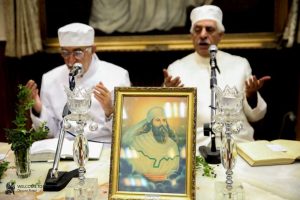Zoroaster evidently was restricted in his lessons by the common and religious experts in the region in which he lectured. It isn’t certain whether these specialists were from his local district or from Chorasmia preceding the change of Vishtaspa.

Certain about reality uncovered to him by Ahura Mazda, Zoroaster evidently did not attempt to topple faith in the more seasoned Iranian religion, which was polytheistic; he did, in any case, put Ahura Mazda at the focal point of a kingdom of equity that guaranteed interminability and happiness. In spite of the fact that he endeavored to change old Iranian religion based on the current social and monetary qualities, Zoroaster’s lessons at first stirred resistance from those whom he called the supporters of the Lie (dregvant).
Ahura Mazda and the Beneficent Immortals
Zoroaster’s lessons, as noted above, fixated on Ahura Mazda, who is the most noteworthy god and alone is deserving of love. He is, as indicated by the Gathas, the maker of paradise and earth; i.e., of the material and the otherworldly world. He is the wellspring of the shift of light and obscurity, the sovereign lawgiver, and the simple focus of nature, and also the originator of the ethical request and judge of the whole world. The sort of polytheism found in the Indian Vedas (Hindu sacred texts having indistinguishable religious foundation from the Gathas) is thoroughly truant; the Gathas, for instance, specify no female god sharing Ahura Mazda’s rule.
He is encompassed by six or seven creatures, or elements, which the later Avesta calls amesha spentas, “valuable immortals.” The names of the amesha spentas much of the time repeat all through the Gathas and might be said to describe Zoroaster’s idea and his idea of god. In the expressions of the Gathas, Ahura Mazda is the dad of Spenta Mainyu (Holy Spirit), of Asha Vahishta (Justice, Truth), of Vohu Manah (Righteous Thinking), and of Armaiti (Spenta Armaiti, Devotion).
The other three entities (substances) of this gathering are said to represent characteristics ascribed to Ahura Mazda: they are Khshathra Vairya (Desirable Dominion), Haurvatat (Wholeness), and Ameretat (Immortality). This does not avoid the likelihood that they, as well, are animals of Ahura Mazda. The great characteristics spoken to by these creatures are additionally to be earned and controlled by Ahura Mazda’s devotees.
This implies the divine beings and humanity are will undoubtedly watch the same moral standards. On the off chance that the amesha spentas demonstrate the working of the god, while in the meantime constituting the request restricting the disciples of the Wise Lord, at that point the universe of Ahura Mazda and the universe of his adherents (the ashavan) approach each other. The exceptionally noteworthy eschatological part of Zoroastrianism is very much shown by the idea of Khshathra (Dominion), which is more than once joined by the descriptive word Desirable; it is a kingdom yet to come.